Max Verstappen’s first F1 win — where it all began
As Max Verstappen zeroes in on a third world title, Mark Hughes recalls his debut victory in 2016, which was so tense it gave his father a nosebleed and saw him hailed as the “talent of the century”

DPPI
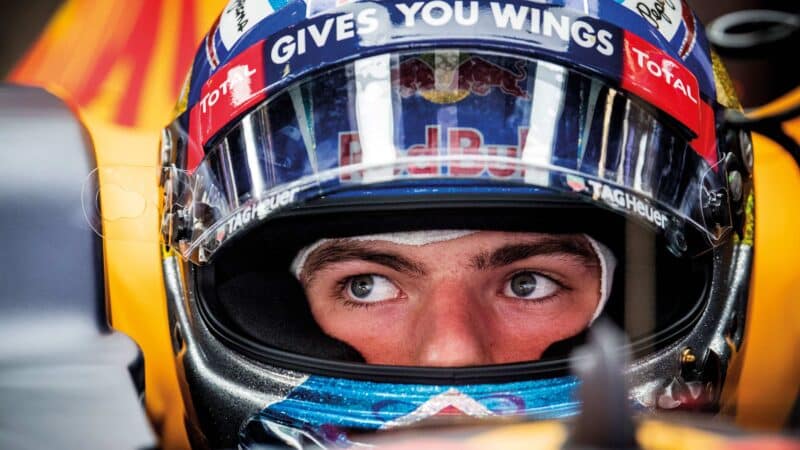
Max Verstappen, just 18, behind the wheel of the RB12, May 15, 2016;
Just five races into his second season of Formula 1, his third season of car racing, 18-year-old Max Verstappen would be racing for one of F1’s absolute top teams from the 2016 Spanish Grand Prix. Daniil Kvyat recalls how he was given the news he’d be going in the opposite direction from Red Bull Racing back to Toro Rosso.
“I was in Moscow, lying on the sofa, watching a TV series and then the phone call came. It was Dr Marko. ‘Hello, well, we have some news for you,’ and there was a 20-minute talk about… there was no real explanation to be honest. I think if the bosses want something to happen, they just make it happen. Simple as that… The people who made the decision can give a better answer to the reason. It’s a question for them. We finished the talk and I went back to finish my TV series.”
The show? Game of Thrones – a series about the machinations of power.
Race-engineering Max at Red Bull would be Kvyat’s old engineer Gianpiero Lambiase, or ‘GP’ as he’s known in the team. He’d arrived there two years before, recruited by Christian Horner from Force India with the intention of putting him on Sebastian Vettel’s car as a replacement for his long-time engineer Guillaume Rocquelin (aka ‘Rocky’) who was moving up to become head of the Red Bull junior driver academy. “Seb had actually interviewed GP for the job,” recalls Horner. “Because it was going to be for him. In GP I saw a great race engineer who was very practical and after I interviewed him he was grilled by a four-time world champion and responded impressively well. He’s a tough character, but calm. Sebastian buggered off to Ferrari and GP ended up with Daniil, then Max stepped into the role.

Max with engineer Gianpiero Lambiase
DPPI
“Max can be very demanding and very sharp when emotions are running high. He’s a thoroughbred, very strong-willed and there’s many an engineer who will wilt under that pressure because Max’s expectation is incredibly high. GP is able to handle that and they each can give as good as they get, so much so that sometimes you forget which is the driver and which is the engineer. It’s a quite different relationship to that between Rocky and Seb. Rocky really got into the mind management of how to get Sebastian in the right mental frame whether it was writing things on his balaclava, naming his car, all these little things. It’s a lot less touchy-feely with Max and GP. They are just brutally honest with each other, no holds barred, and in that respect, I think it’s a very pure, very honest relationship.”
Before that relationship developed, Max had to get himself comfortable in the car. He did a seat fitting at the Milton Keynes factory but had not even driven the RB12 on the sim before he drove it for real in the first practice session of the Spanish Grand Prix.
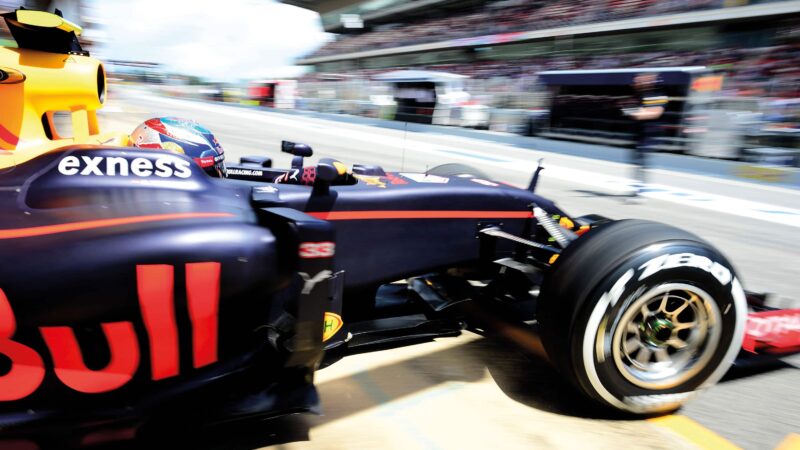
Verstappen leaving the pits in practice
“I’m very happy with the chance they have given me,” Verstappen said at the FIA press conference at the start of the weekend. “I’m racing for a top team now and that was always the plan, what I wanted to do. As for it being a risk [to be in a top team so early], to be honest I think it was a bigger risk to be so young in Formula 1 but I’ve handled it pretty well.
“From now on it’s just getting used to a new car, which is not easy in the season, but already with the things I’ve done in the factory they’ve given me a lot of confidence.”
“I’m racing for a top team now and that was always the plan, what I wanted to do”
It was prior to this weekend that his mother Sophie began a ritual she has maintained ever since, as told to website WagsF1: “I go to the little church here in town and I burn a little candle and make a prayer. Then I send the picture to Max.”
Watching him in that first practice session from the outside of Turn 7, the left-hander at the bottom of a hill with a tricky, slightly downhill braking zone, I could see that his muscle memory was still attuned to the less grippy Toro Rosso. He’d begin turning earlier than his fully familiar team-mate Daniel Ricciardo and the car would respond instantly, too early. He had to learn he no longer needed to slide this car up to the apex with understeer but could turn in late and hard – and it would respond. He was doing it like that after a few laps. But that’s how new this all was.
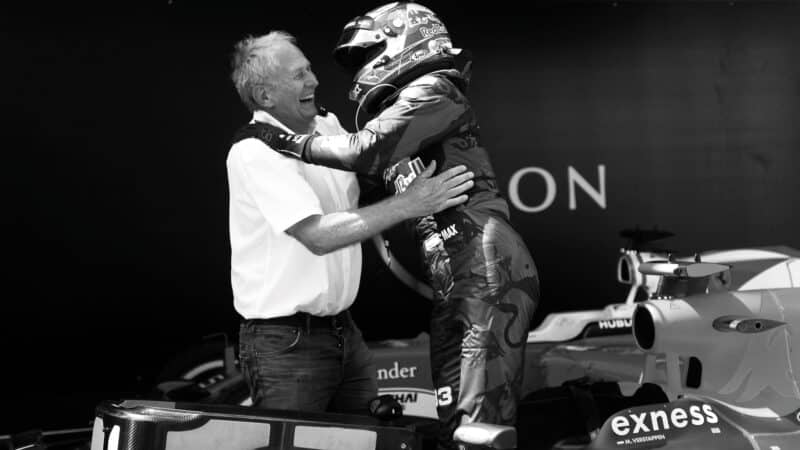
Debut winner with Helmut Marko
Getty Images
Verstappen had a high bar in Ricciardo who had arrived at the Red Bull senior team a year too late to take advantage of its title-winning competitiveness. In 2014, the first year of the hybrid formula, Renault’s power unit was uncompetitive but Ricciardo’s reputation soared regardless as he out-performed the incumbent Vettel and won three grands prix. The 2015 Red Bull had been outgunned not only by the dominant Mercedes but by Ferrari too, and Ricciardo hadn’t been able to add to his win tally. The 2016 car was much better and though still no Mercedes, it was fully competitive with Ferrari.
“There were very few people quicker than Daniel Ricciardo over a lap at that time,” recalls Horner, “and in Spain Max came in, having never been in the car before that weekend, went quicker than him in Q1, edged him out in Q2 and only lost out to him in Q3 because he didn’t want to change the wing angle and ended up picking up a bit of understeer.
“That switch had put Max under enormous pressure. But he just got in and delivered against effectively our lead driver. He was hugely impressive. It was a ‘wow’ moment definitely.”
But that was just the start of it. In fact, qualifying behind Ricciardo may actually have won him the race.
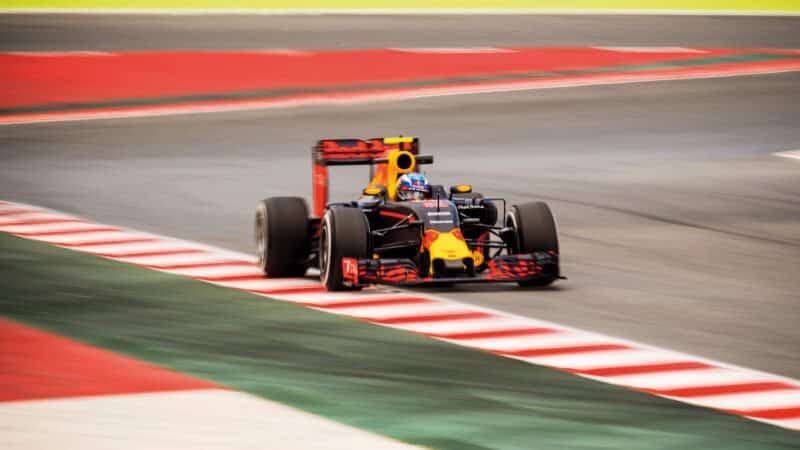
Keeping clear of Kimi
DPPI
To understand how Max Verstappen won first time out for Red Bull, becoming at 18 years 228 days the youngest-ever grand prix winner (beating Sebastian Vettel’s previous record of 21 years 73 days) you have to know three key facts. First, Mercedes drivers Lewis Hamilton and Nico Rosberg crashed into each other on the opening lap, beaching their damaged cars in the gravel four corners into the race. Second, the race then became a strategy contest between Red Bull and Ferrari, with both teams opting to split strategies between each of their drivers. Third, finding himself – like Ferrari’s Kimi Räikkönen – on the better strategy, Max soaked up enormous pressure from the Finnish former world champion without the hint of an error, to capitalise on points one and two.
In the first part of the race, as Räikkönen made a poor, wheel-spinning start dropping three places, Max ran second to new team-mate Ricciardo, having gone wheel-to-wheel with Vettel’s Ferrari at the first corner and prevailed. This put in place a choreography that saw Vettel run over the Astroturf at Turn 3 and lose position to the Toro Rosso of Carlos Sainz. It would take Vettel a few laps to find a way back ahead of the slower car but once he’d done so, his pace alerted Red Bull to the possibility that he may be three-stopping – which presented a strategic conundrum for them on the pitwall.
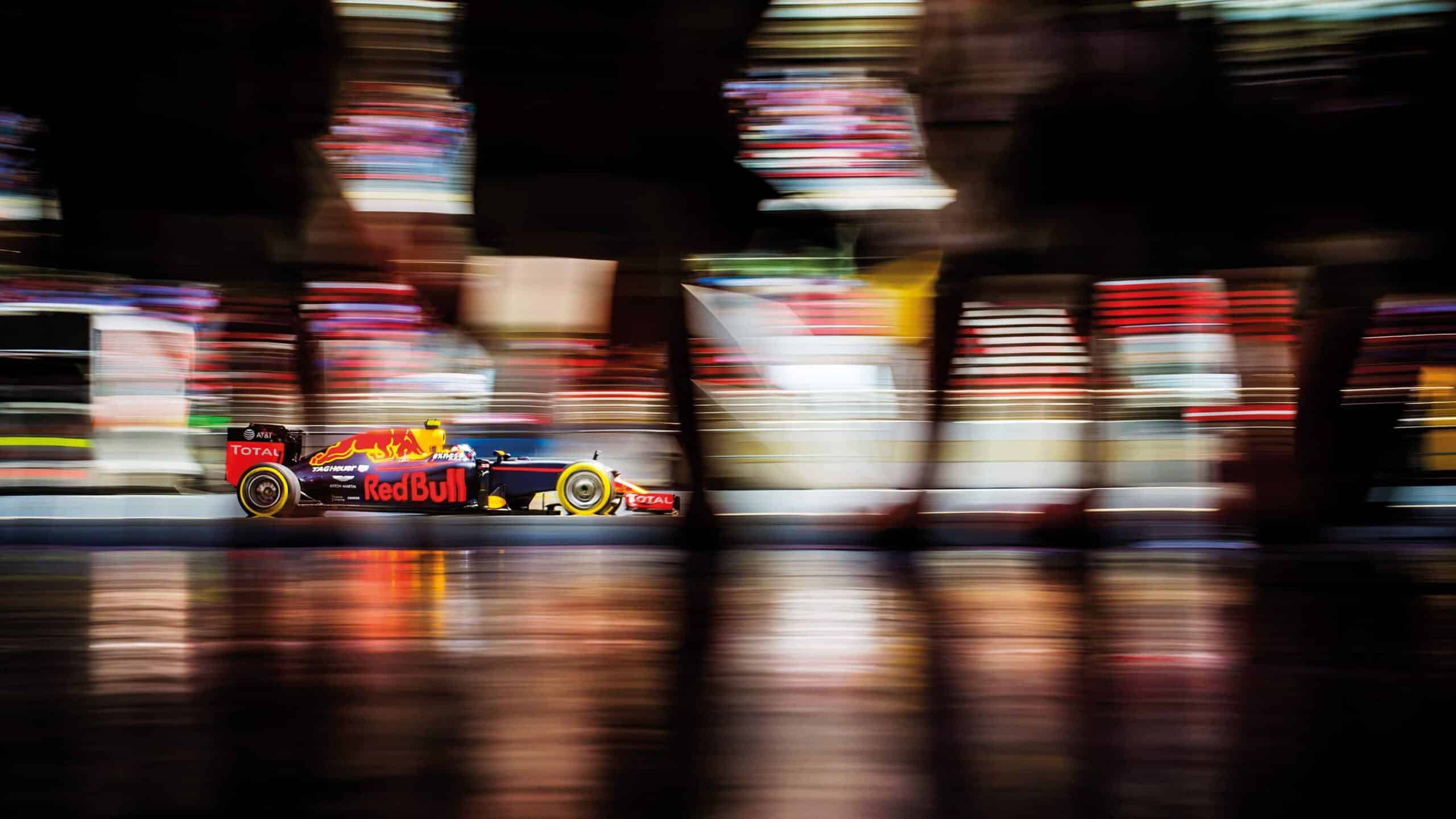
Horner: “Once it was clear Vettel was three-stopping we had to take a tactical decision at that point to say, ‘Do we try and cover Vettel with one of our cars?’ The car we believed had the best chance of winning the race was the lead car [Ricciardo] and so we elected to go for the three-stop with him.”
This decision turned out to be disastrous for Ricciardo – and not great for Vettel either. With the tyre degradation not as great as Red Bull had feared, the two-stop worked better. It meant after they’d all made their stops, Max was leading from Räikkönen with Vettel and Ricciardo in third and fourth going faster on their fresher tyres, but not by enough to make up for the time lost to the extra pitstop. All that remained for Max to do now was to look after his tyres for another 32 laps while keeping the Ferrari filling his mirrors behind. He had to work out how best to deploy his battery charge only to defend, not to try to pull away – as that would have left him a sitting duck after the battery had emptied itself a few laps later. And he had to do all this in a new car for a new team.
“It was like driving on ice for the last 10 to 15 laps,” he recalled on Red Bull’s YouTube channel, “and we were not sure if we were gonna make it to the end. The tyres were gone but I could see Kimi behind me was also struggling. I knew if I locked up or missed the apex I was sure he was going to get me.”
Leading races was a familiar feeling for him – it’s what he used to do all the time before his rookie F1 season the previous year. As he’d said then, a grand prix was just like a kart race with more spectators, after all. But towards the end of what must have felt an endless 32 laps, he admitted that the momentousness of what he was about to achieve did get to him a little.
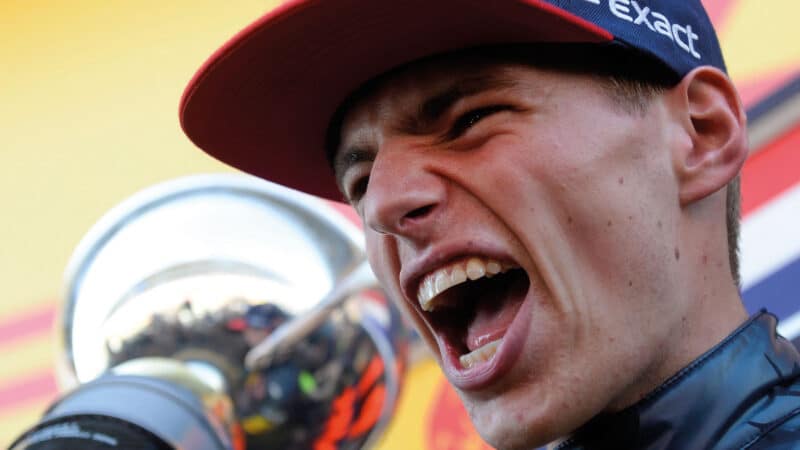
Get Dad a loo roll for his nose – Max arrives, and F1 has its new contender
Getty Images
“With five laps to go I started cramping a bit because of the excitement and the focus. I was literally counting the laps down. There was a lot of pressure. My dad got so excited towards the end that his nose started bleeding. I can’t even imagine how it was for him sitting in my driver room, seeing the final few laps unfold.”
As he took the flag, Horner came on to the radio: “Max Verstappen you are a race winner. Fantastic. What a great debut.”
“His mental resilience is the strongest I’ve seen,” says Horner. “His ability under pressure is phenomenal. And the more pressure you put on, the better he delivers.”
“With five laps to go I started cramping a bit because of the excitement and the focus”
While that innate quality brought F1 victory to the 18-year-old at the very first available opportunity, he wasn’t yet in a position to do it on a regular basis. In fact, he would have to endure another five seasons of less-than-title-calibre cars, five years of treading water. There were times when that strained Max’s loyalty to the team, when his father Jos and manager Raymond Vermeulen made no secret of their concern about Red Bull’s ability to provide a car with which he could fight for championships and fulfil his potential. But that mental resilience, that toughness, allowed him to hang on until he finally had a Red Bull good enough to allow him to fight – really fight – for a world title.
Watching that first victory unfold was Marko’s old adversary Niki Lauda, fresh from a 45-minute postmortem in the Mercedes motorhome with his errant drivers Rosberg and Hamilton. He made a point of going over to congratulate Jos who was clearly holding back tears of joy. “I take my hat off to Max,” said Lauda. “He is a talent of the century… Normally I am against fathers telling drivers what to do because they cannot be an emancipated personality. But he couldn’t emancipate Max because he was so young. What Jos did, he did everything right. To make him safe, to make him comfortable so he can race with Kimi Räikkönen right behind him for so long and not make a single mistake. I have to say it: Marko made the right call. He is the master of the Verstappens.”
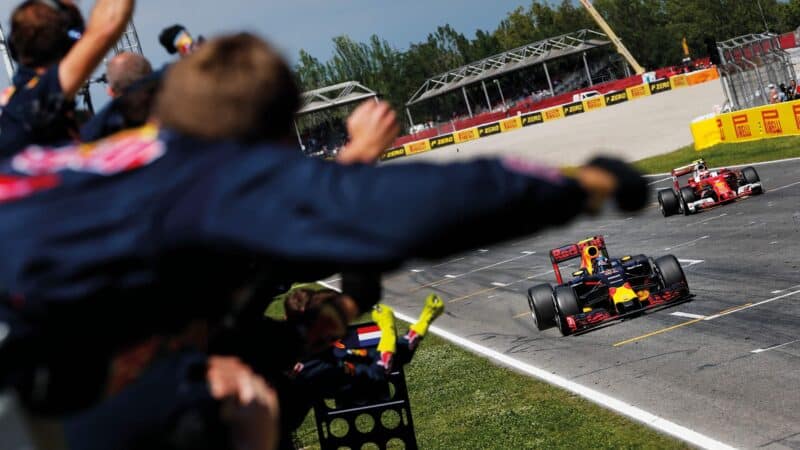
Max holds on for his historic, record-breaking win, with Ferrari’s Räikkönen less than a second behind.
DPPI
Jos was lost for words. It’s one thing to plan and train for this moment for a decade, but quite another to witness it actually happening. “He’s only 18 and the way he raced, it was unbelievable. I don’t know what to say.”
“If I have to name the three proudest moments of my life,” Marko said some years later, “one would be winning Le Mans as a driver, another would be Sebastian Vettel’s first world championship, and the third would be Max’s victory in Barcelona, 2016. Because I had taken so much shit about signing a guy too young for F1.” This one was very personal for the tough old bear.
There was lots of celebrating that evening. Max’s life had just changed fundamentally. This success would also come to change the lives of Jos, Sophie and his sister Victoria. There was a long road stretching out ahead of all of them. Where it would lead couldn’t be known. But it was going to be an exciting journey.

|
Extracted from a new book Unstoppable: The Ultimate Biography of Max Verstappen, Mark Hughes ISBN 9781472299048 |

